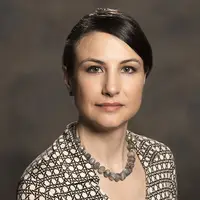Tracking how much nonprofit hospitals spend on the community
Since the 1950s, nonprofit hospitals—the majority of public hospitals in the U.S. —have been required to spend a portion of their operating budgets on what the Internal Revenue Service (IRS) terms “community benefit.” In 1969, this was replaced with another requirement encouraging hospitals to engage in activities that benefit their communities. The IRS also created a new category called “community health improvement [pdf],” meant to cover outside-the-hospital initiatives such as access to healthcare services, transportation programs, and access to housing.
Beginning in 2012, nonprofit hospitals received a mandate from the Affordable Care Act to complete a Community Health Needs Assessment (CHNA) every three years. The CHNA process requires hospitals to “Take into account input from persons who represent the broad interests of the community served by the hospital facility, including those with special knowledge of or expertise in public health,” and then develop an implementation strategy to show how their proposed community benefit spending aligns with the results of this assessment.
In the 2017 tax year, community benefit spending of U.S. nonprofit hospitals was over $70 billion. To create greater transparency in the use of these funds, RTI International developed Community Benefit Insight (CBI). Funded by the Robert Wood Johnson Foundation, CBI provides community benefit spending data on nonprofit hospitals throughout the United States. The goal being better understanding of the linkages between community health needs and community benefit expenditures.
A One-Stop Resource for Community Benefit Information
The amount of money nonprofit hospitals spend on community benefit has naturally attracted the attention of community activists, non-governmental organizations and health policy analysts – all who would like these funds allocated to the most pressing community needs. A recent study published in Health Affairs identified that nonprofit hospitals devoted 8.1 percent of their operating expenses to community benefit expenditures in 2014, a slight increase from 7.6 percent in 2010. Further, the authors also confirmed most of the community benefit dollars were allocated to unreimbursed patient care (e.g. charity care) rather than to community initiatives.
Historically, ascertaining a given hospital’s community benefit expenditures has not been an easy matter. This information is held by the IRS, and while it is available to interested parties, few people are willing to navigate the process required to access the data. The CBI website presents community benefit expenditures reported by nonprofit hospitals on IRS Form 990 Schedule H and supplements this data with information from the Centers for Medicare and Medicaid Services and the American Hospital Association. However, given the complexity of the health care system, IRS spending data is typically released by 18 months behind real time.
As an example of how CBI works, let’s examine NYU Langone Health, which encompasses a number of hospitals in the New York metropolitan area. In 2014, NYU Langone Health’s operating expenses amounted to approximately $2.4 billion, with about 16 percent (or more than $380 million) devoted to community benefit. Research, education, and Medicaid accounted for the bulk of this expenditure, with smaller slivers devoted to financial assistance and services to improve community health, including an obesity education program and pre-K funding for two elementary schools. For context, 16 percent is on the high end for a nonprofit hospital; some institutions in other parts of the country report less than 1 percent.
Aligning Community Benefit Spending with Community Needs
The goal is for CBI to facilitate a dialogue between NGOs, governmental bodies, community advocates, nonprofit hospitals and hospital systems about where these dollars are best allocated within the community. Are there instances where hospitals would have a bigger impact if their community benefit expenditures were devoted elsewhere? These are the types of considerations administrators and advocates will have to address as the U.S. health care system continues to evolve.
- Robert Wood Johnson Foundation




